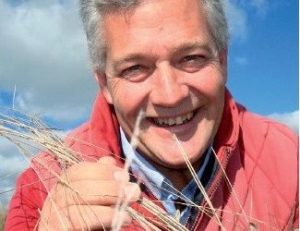
Graeme Hand teaches Holistic Management in Australia and around the world, and he helps people restore native perennial grasses–and make a profit–with livestock. He shares his stories and secrets, some of which will surprise you!
2’39 what Australian land management was like before European settlement
3’52 non-native species — not as big a problem as poor land management
5’00 people’s motivation in learning holistic grazing practices
5’55 boom-bust cycles and the path to stability, and the desire to sequester carbon
7’01 the paradox that more animals can mean less profit, and vice versa
8’24 increase profits without changing other parts of the business too much
9’57 choosing the right animals for the kind of food they’re eating and land they’re grazing
10’27 example from real life: debt, ground cover, stocking numbers
11’30 lowering risk by adjusting stocking rate and type of cow, leading to stability through stabilizing the feed base
13’05 managing risk through minimizing losses rather than maximizing production
13’59 mechanical vs. biological thinking
15’45 arid parts of Australia and stocking rates
17’19 perennial native grasses as good feed base for livestock
18’50 happy wildlife
19’25 making a plan for clients and teaching them how to make their own plans
21’48 the science and art of holistic management
22’35 how do you help people overcome each barrier
24’03 to what extent are people resistant to change
25’39 overcoming barriers to adoption
29’10 are farmers working together and comparing notes
31’54 training farmers in Brazil
34’39 cattle are vilified in Brazil
35’06 cattle and mammal extinction in Australia
35’42 turn around biodiversity loss while producing food
35’57 boom-bust cycles in agriculture
36’38 matching stocking rate with feed supply
36’53 cow vs. bison hooves
39’49 forests and grasslands
40’05 variation in techniques
40’35 “safe to fail” practice areas
41’10 Gabe Brown in Australia
41’25 working in Mongolia
42’25 understanding perennial grass physiology
42’50 the social component
43’50 making regenerative agriculture the norm, and addressing the problem of innacurate agriculture education
45’27 can regenerative agriculture provide the quantity of meat we need
45’44 issues of population
46’11 people don’t like sharing, problems of social breakdown
46’41 more about Mongolia
48’11 the importance of listening to people
48’35 vision of returning prairie land and other regenerative practices
49’00 making sure that everyone has enough, social inequality
49’30 the Regenerate 2019 conference



Subscribe:
Apple Podcasts
Spotify